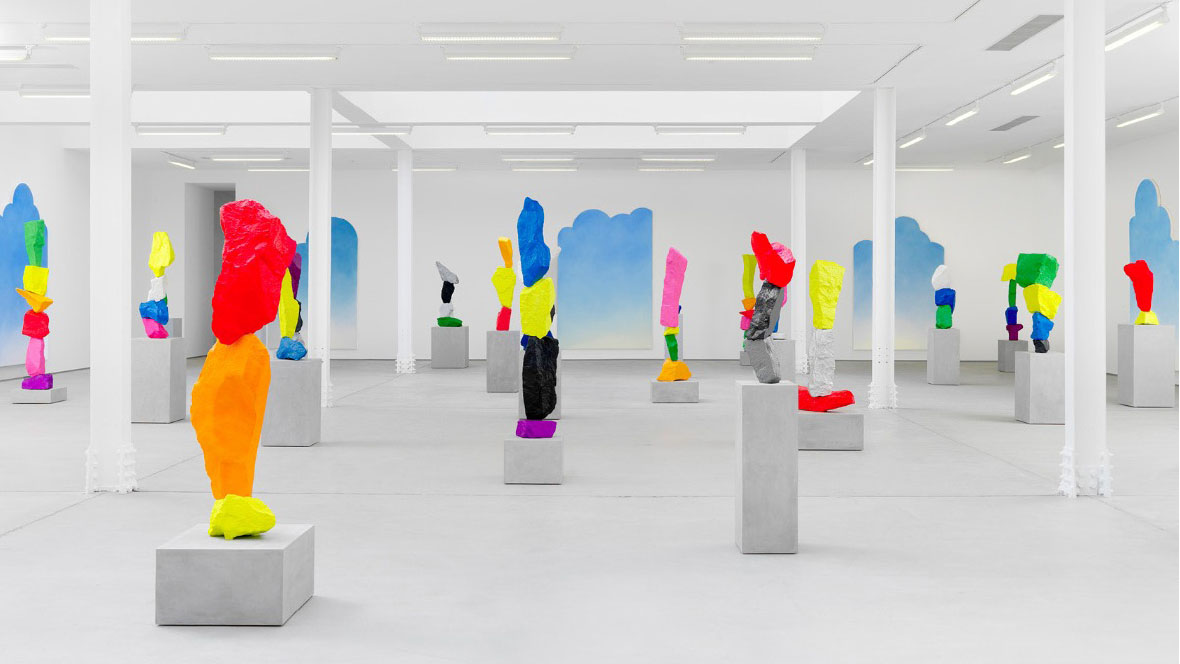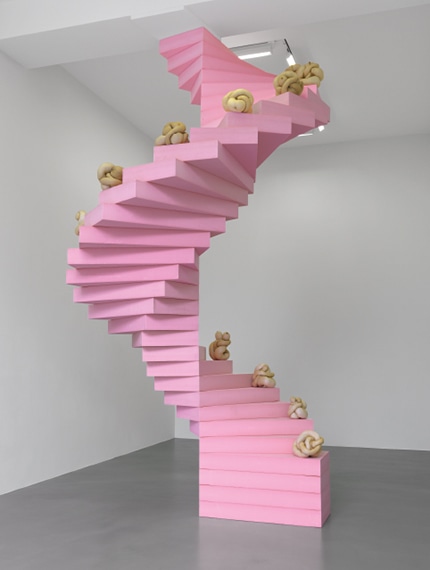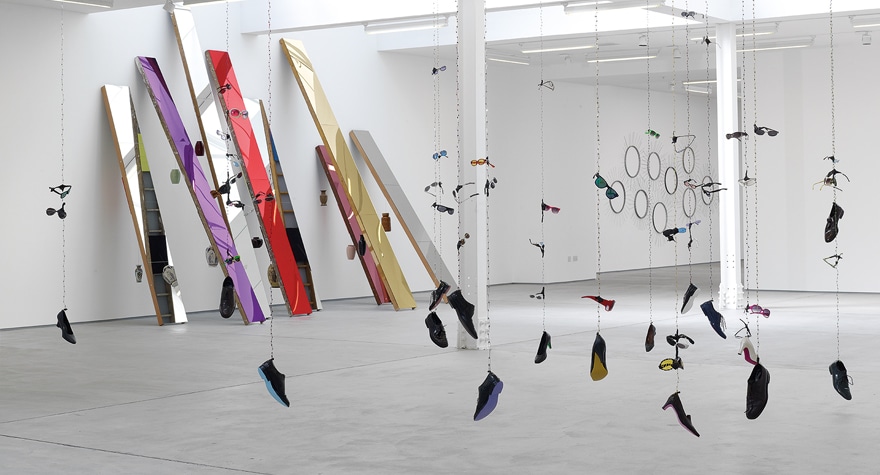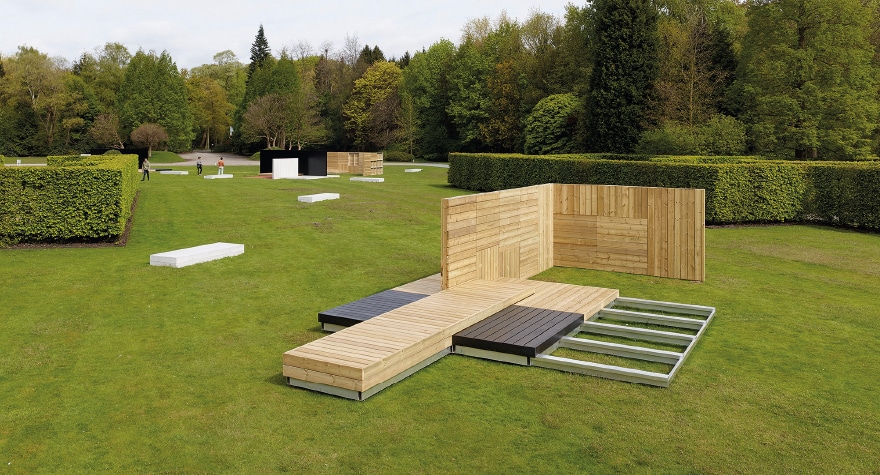
Art Space With Sadie Coles
We tend to think about gallery spaces in terms of the work shown within them, and less about the spaces themselves – where they are located and how gallerists and their artists choose them. In addition, in the current contemporary landscape where art is now viewed and consumed in new ways, we need to ask the question: are gallery spaces as relevant as they once were? While at the Hydra Workshop this summer, an annual project where collector Pauline Karpidas and gallerist Sadie Coles invite an artist to present work on this idyllic island, our catalogue correspondent, caught up with Coles to talk about her experience of art space.
Catalogue Correspondent: Hi Sadie. Speaking of locations what a beautiful spot to be having this conversation.
Sadie Coles: I know!
CC: You have always located your gallery spaces in the West End around Mayfair and Regent Street. Going back to the beginning with your first gallery space in Heddon Street, could you talk about your thought process in making that choice?
SC: Yes. I guess there are two reasons for choosing a central location. The first is a very obvious one: you want to choose somewhere that is convenient for your audience to visit and London is a place with lots of transient visitors so I wanted to be right in the centre – near hotels, near transport, near nice restaurants too. The second reason for choosing central London is that it is immediately and undeniably London in terms of its identity – somewhere that represents the energy, dynamism and glamour of what is one of the world’s great global cities.

Sarah Lucas, Father Time, 2011 / 2016. Tights, fluff, wire, pink foam blocks 532 × 320 × 320 cm / 209 ½ × 126 × 126 in. Unique, HQ15-SL8433S, Copyright the artist, courtesy Sadie Coles HQ, London
CC: All your spaces are in London, have you considered expanding elsewhere, and what do you think about the increasing presence of international galleries taking space here?
SC: I think it is really positive because it emphasises that London is a place where you can really do business and I think that is encouraging. If the international galleries left I would feel that it indicated the opposite. What I like about London is that you have layers of business – clients who live and work in London and are collecting, people who go to London to put their kids in schools, people who are in London for a few years for business and then move on and then clients who come in for the auctions and other events like Frieze. Plus London has a considerable number of artists and students who are there to be in a major centre, one which is greatly enriched by the draw of the large number of museums and spaces for contemporary art. It is a place with an ebb and flow which is always replenishing.
CC: Yes and I think that constant movement helps test the temperature of how things are – not just in terms of art, but wider culture, and business too. With the creative migration towards East London over the last 20 years were you ever tempted to move in that direction?
SC: The Conservative local authority were constantly creating obstacles. While we were negotiating these, our survey identified an outcrop of Japanese knotweed on the site, which effectively made us uninsurable. We didn’t get the building, nor did we take up the pledges from patrons. Actually, I think Fairfield International has already happened. We expected it to take a concrete form but all along it was a state of permanent optimism, ambition and enthusiasm. Fairfield International doesn’t exist as it was planned, but like all great creative endeavours it was a matter of process. It metamorphosed into something that, for me is much greater.
CC: Is there such a thing as an ideal space?
SC: Location is always key. You can see a fantastic space but sometimes discount it because there isn’t the right mixture of activity around it. Our South Audley Street gallery was my least successful location – not in terms of doing business because one makes sales in a multitude of ways – but it had several things which meant that is was less perfect. There wasn’t a good coffee shop nearby, or as many people just passing by, because even though it was really central it was slightly off-grid and a little sleepy. One of the things I love about Kingly Street is that it has that slightly grubby feeling of being on the edge of Soho. There is a constant flow of life, young people on the streets, everyone spilled out on the pavement in the summer drinking warm beer. It has a great energy about it. And Davies Street has its proximity to Berkeley Square, other great galleries, and the auction houses, plus Mount Street. Even though it’s more grand, it has a lot of bustle
CC: I love the Kingly Street gallery – it was quite a find.
SC: We knew there had been a nightclub there, Studio Valbonne, and we knew it had been closed for years, and as we are close to The Crown Estate we asked them what was going on with it. There had been an issue with Westminster Council which took some time to sort out, but eventually we were able to take it and I think we were all surprised by what a divine space it was, once we ripped out all the partitions, black ceilings and disco balls.

Installation view, Jim Lambie, Answer Machine, Sadie Coles HQ, London, 11 June – 17 August 2014. Copyright the artist, courtesy Sadie Coles HQ, London
CC: Now that art is increasingly viewed, and sometimes bought, online, and collectors are sent PDFs of works before art fairs and so on, is the gallery itself becoming less important?
SC: It’s interesting that you ask if visiting a gallery is relevant because you can see so many shows now online and there is a slight feeling that there has been a decline in footfall because of that. But at the end of the day the serious committed collector, the artist, the art student, the curator and the critics, they all want to experience the physical art works and the installation of the shows, so of course it remains an essential part of the promotion of the artist.
CC: I agree. It seems to me that the art world thrives on individual conversations and the only way to do that is to be in the same room as the people you are having that conversation with in a way that is hard to do online.
SC: Well it is both the first and final moment that the artist has 100% control of the presentation and contextualising of their new work. The artist decides how best to present, place, hang and contextualise the work and later on, when it is in a museum exhibition, at an art fair, or hanging in a private collection, that control is most often not theirs. For historical reasons the first presentation is essential in understanding the full intention of the artist, so if you want to get the essence of someone, their total vision, you will go and see their primary gallery shows.
CC: Yes, and those shows present a body of works that exist alongside each other and promote a discourse that you might not get seeing them out of that context. You have had gallery swaps in the past and we are in an environment now with a sharing economy, co-working etc, is there an application for that in the art world? Spaces that could provide temporary shows for different galleries for instance?
SC: Yes, in London there are some, like Condo (www.condocomplex.org) which is essentially hosting other galleries. They were doing it with smaller galleries but are now widening it across the board. I think it’s a great idea, and there is a great sense of community in London within the art world. We get together and talk about things like rents, art fair fees, how best to support each other and so on.
CC: That brings me to another question, which is representing a number of different artists all with a variety of work and having different needs, how do you involve them in choosing your spaces?
SC: I usually show the spaces I am looking at to a couple of key artists – Urs Fischer is very good for instance because he has an acute spatial awareness and sees how spaces can work with a laser like precision. I always want to add spaces that complement each other. One space can be good for large or monumental work, and another space can provide a more intimate experience.For instance we are about to do a show of a young artist at Balfour Mews, a funky garage space which is less pressure for the artist somehow, not just in terms of the amount of work they have to make to fill it, but also in terms of the feel of the space. The new gallery in Davies Street is a glass fronted shop on Berkeley Square, opposite Phillips, and has a more visible, focussed feel to it, but the artist doesn’t have to make as huge a body of work as they would for our large space at Kingly Street.
CC: Another thing I think is important is that when I come to your galleries I always feel a sense of community – that artists and likeminded galleries are around you both physically and in spirit.
SC: That’s a very important point. That’s part of the mix of the things in a particular area. I want to be near great galleries, great museums and great auction houses with artists passing through, as well as clients, it’s essential.

Installation view, Andrew Zittel, The Flat Field Works, Middleheim Museum, Antwerp, 13 June – 27 September 2015. Copyright the artist, courtesy Sadie Coles HQ, London
CC: What other qualities unique to London do you think have had an influence on
the art scene?
SC: The opening of Tate Modern was really significant for London – almost like the beating heart. Since the 1990s the YBAs, Frieze, Tate and the auction houses have all contributed hugely to London being taken seriously by the contemporary art scene. I think we are also incredibly well served with great contemporary exhibition spaces. In comparison to New York, London has a huge number of incredible spaces with great programmes of international art: the ICA, Whitechapel, Chisenhale, South London Gallery, Hayward Gallery, Camden Art Centre, Barbican, Studio Voltaire, The Showroom, Raven Row, Newport Street, it goes on and on.
CC: I guess it has encouraged the growth of collectors. I remember assuming when Frieze
first started that there were a few hundred British collectors of contemporary art but being told that there were only around 40.
SC: There were literally five when I started working at Anthony d’Offay at the end of the 1980s. It seems incredible to remember that now.
CC: Looking at the commercial world with space for artists becoming increasingly unaffordable in London, is it also true that particularly for the younger galleries this will be an issue?
SC: Funnily enough I think this could be a really good opportunity to do what I have done my whole career as a gallerist and that is to wrangle interesting spaces from landlords and developers at competitive rents, often on a short-term basis. If London has any contraction this kind of opportunity will become possible and you can have conversations with long-term thinking property people. This could be particularly important for the younger galleries that are really struggling with affordability right now. If gallerists and property owners work together, and are adventurous and fluid, and see the value that art galleries add to neighbourhoods, then we could be entering a time of opportunity.


